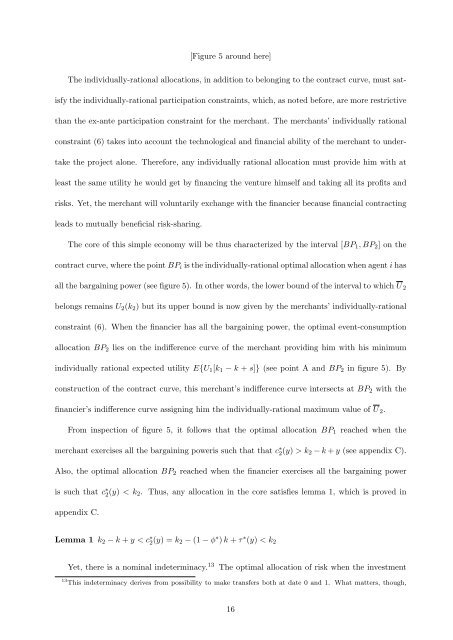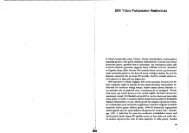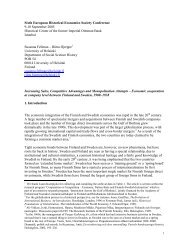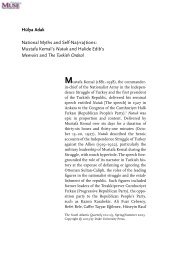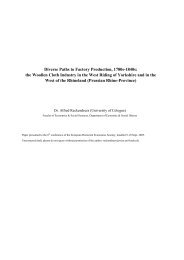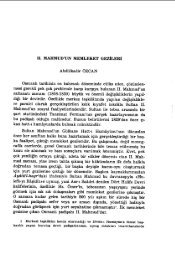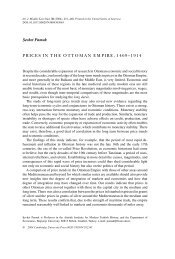The Birth of Insurance Contracts - The Ataturk Institute for Modern ...
The Birth of Insurance Contracts - The Ataturk Institute for Modern ...
The Birth of Insurance Contracts - The Ataturk Institute for Modern ...
You also want an ePaper? Increase the reach of your titles
YUMPU automatically turns print PDFs into web optimized ePapers that Google loves.
[Figure 5 around here]<br />
<strong>The</strong> individually-rational allocations, in addition to belonging to the contract curve, must sat-<br />
isfy the individually-rational participation constraints, which, as noted be<strong>for</strong>e, are more restrictive<br />
than the ex-ante participation constraint <strong>for</strong> the merchant. <strong>The</strong> merchants’ individually rational<br />
constraint (6) takes into account the technological and financial ability <strong>of</strong> the merchant to under-<br />
take the project alone. <strong>The</strong>re<strong>for</strong>e, any individually rational allocation must provide him with at<br />
least the same utility he would get by financing the venture himself and taking all its pr<strong>of</strong>its and<br />
risks. Yet, the merchant will voluntarily exchange with the financier because financial contracting<br />
leads to mutually beneficial risk-sharing.<br />
<strong>The</strong> core <strong>of</strong> this simple economy will be thus characterized by the interval [BP1, BP2] on the<br />
contract curve, where the point BPi is the individually-rational optimal allocation when agent i has<br />
all the bargaining power (see figure 5). In other words, the lower bound <strong>of</strong> the interval to which U 2<br />
belongs remains U2(k2) but its upper bound is now given by the merchants’ individually-rational<br />
constraint (6). When the financier has all the bargaining power, the optimal event-consumption<br />
allocation BP2 lies on the indifference curve <strong>of</strong> the merchant providing him with his minimum<br />
individually rational expected utility E{U1[k1 − k + s]} (see point A and BP2 in figure 5). By<br />
construction <strong>of</strong> the contract curve, this merchant’s indifference curve intersects at BP2 with the<br />
financier’s indifference curve assigning him the individually-rational maximum value <strong>of</strong> U 2.<br />
From inspection <strong>of</strong> figure 5, it follows that the optimal allocation BP1 reached when the<br />
merchant exercises all the bargaining poweris such that that c ∗ 2 (y) > k2 − k + y (see appendix C).<br />
Also, the optimal allocation BP2 reached when the financier exercises all the bargaining power<br />
is such that c ∗ 2 (y) < k2. Thus, any allocation in the core satisfies lemma 1, which is proved in<br />
appendix C.<br />
Lemma 1 k2 − k + y < c ∗ 2 (y) = k2 − (1 − φ ∗ ) k + τ ∗ (y) < k2<br />
Yet, there is a nominal indeterminacy. 13 <strong>The</strong> optimal allocation <strong>of</strong> risk when the investment<br />
13 This indeterminacy derives from possibility to make transfers both at date 0 and 1. What matters, though,<br />
16


